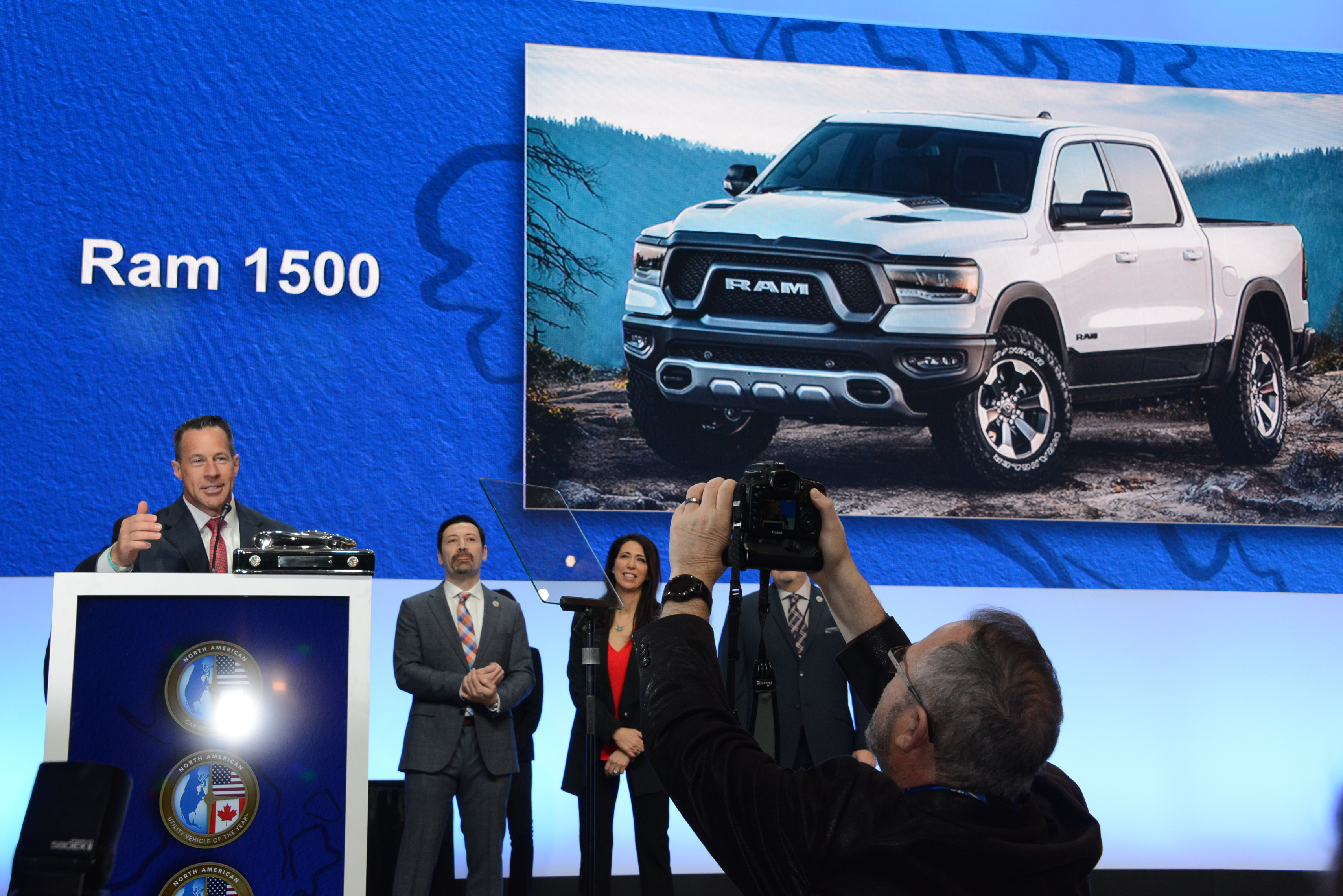Steel Markets

Award-winning Vehicles Showcase Advanced Steels
Written by Tim Triplett
January 18, 2019
More than 800,000 car enthusiasts turned out for the North American International Auto Show this week in Detroit to admire the shiny new offerings for the 2019 model year. The steel industry is even more interested in what’s beneath those shiny exteriors.
The Steel Market Development Institute displayed a degree of pride in congratulating the winners of this year’s North American Car, Utility and Truck of the Year (NACTOY) Awards. All three vehicles take advantage of the strength and durability offered by high-strength steel construction, said the steel industry trade group.
 The 2019 Car of the Year is the Genesis G70, the Utility Vehicle of the Year is the Hyundai Kona, and the Truck of the Year is the Ram 1500.
The 2019 Car of the Year is the Genesis G70, the Utility Vehicle of the Year is the Hyundai Kona, and the Truck of the Year is the Ram 1500.
“The NACTOY Awards are a significant validation of the work by automotive engineers to design the world’s next great vehicles,” said Dr. Jody N. Hall, SMDI’s vice president, automotive market. “These vehicles also demonstrate the latest innovations in advanced high-strength steel (AHSS), which is a proven and trusted material for both automakers and consumers. The steel industry is well-positioned to help automakers bring new mobility innovations to life, today and in the future.”
The Genesis G70 offers the highest degree of car body rigidity in its class by increasing the average strength of the body using AHSS. Ninety-eight percent of the steel used in the frame of the Ram 1500 is high-strength steel, helping the truck deliver up to 12,750 pounds of towing capability and 2,300 pounds of payload. Particularly important for the Hyundai Kona/EV is the weight reduction achieved with AHSS, SMDI said.
More than 65 steel-intensive 2019 vehicles were introduced in Detroit and at major auto shows across the country in the past year. AHSS was represented in the composition of every vehicle segment and size, including the popular SUV, CUV and truck markets, SMDI said.
“As vehicles evolve to become stronger, safer and more durable, high-strength steel continues to be the material of choice for automakers,” Hall said. “Occupant protection is enhanced by using high-strength grades of steel in critical vehicle areas such as the frame and body. We are seeing more vehicles debut with predominantly steel structures because it is a proven, trusted and cost-effective material for automakers and consumers alike.”
SMDI points to other notable vehicle debuts of the past year:
• 2019 Volkswagen Jetta—Composed of 35 percent ultra-high-strength hot-formed steel, 12 percent ultra-high-strength steel and 39 percent extra high-strength steel.
• 2019 Hyundai Santa Fe—The body is composed of 67 percent high-strength steel for added strength and reduced weight.
• 2019 Kia Forte—Composed of 54 percent advanced high-strength steel.
• 2019 Chevrolet Silverado— Eighty percent of the frame is made of high-strength steel. The fully boxed steel frame is 88 pounds lighter than its predecessor, while offering 10 percent greater torsional rigidity. It also has a roll-formed, high-strength steel bed floor.
• 2019 Acura RDX—The body structure is composed of more than 50 percent high-strength steel, increasing body rigidity and cabin quietness.
• 2019 Jeep Cherokee—To achieve lightweighting in the body, Jeep used 65 percent hot stamped, high-strength and ultra-high-strength steel.
• 2019 Mercedes-Benz G-class—Thanks in part to high- and ultra-high-strength steels comprising the body, the new model lost 375 pounds, while increasing the rigidity and load-bearing functions of the vehicle.
• 2020 Toyota Corolla—Increased use of ultra-high-tensile steel improved the torsional rigidity by 60 percent, enhancing occupant safety.
• 2019 Subaru Forester—Built on the Subaru Global Platform that uses extensive high-strength steel for enhanced crash safety and a quieter interior.
In fairness to the aluminum industry, many of these same vehicles have also increased their aluminum content as part of a multi-material strategy to reduce weight and improve fuel efficiency.

Tim Triplett
Read more from Tim TriplettLatest in Steel Markets

CMC looks beyond Arizona micro-mill woes to long-term viability of construction mart
Despite the economic and geopolitical upheaval of the last five years, CMC President and CEO Peter Matt points out that the construction market has been an essential element of the way forward.

US importers face stricter rules under revamped S232 tariffs
“CBP expects full compliance from the trade community for accurate reporting and payment of the additional duties. CBP will take enforcement action on non-compliance," the agency said in a March 7 bulletin.

Steel exports rebound in January
US steel exports recovered to a five-month high in January after having fallen to a two-year low in December. This growth follows four consecutive months of declining exports.

Construction spending drops marginally in January
Construction spending edged down slightly in January, slipping for the first time in four months. The US Census Bureau estimated spending at a seasonally adjusted annual rate of $2,196 billion in January, down 0.2% from December’s downward revised rate. The January figure is 3.3% higher than a year ago. January’s result, despite the slight erosion, […]

HVAC equipment shipments slow in December but strong annually
Shipments of heating and cooling equipment in the US fell to an 11-month low in December, according to the latest data released by the Air-Conditioning, Heating, and Refrigeration Institute (AHRI).
